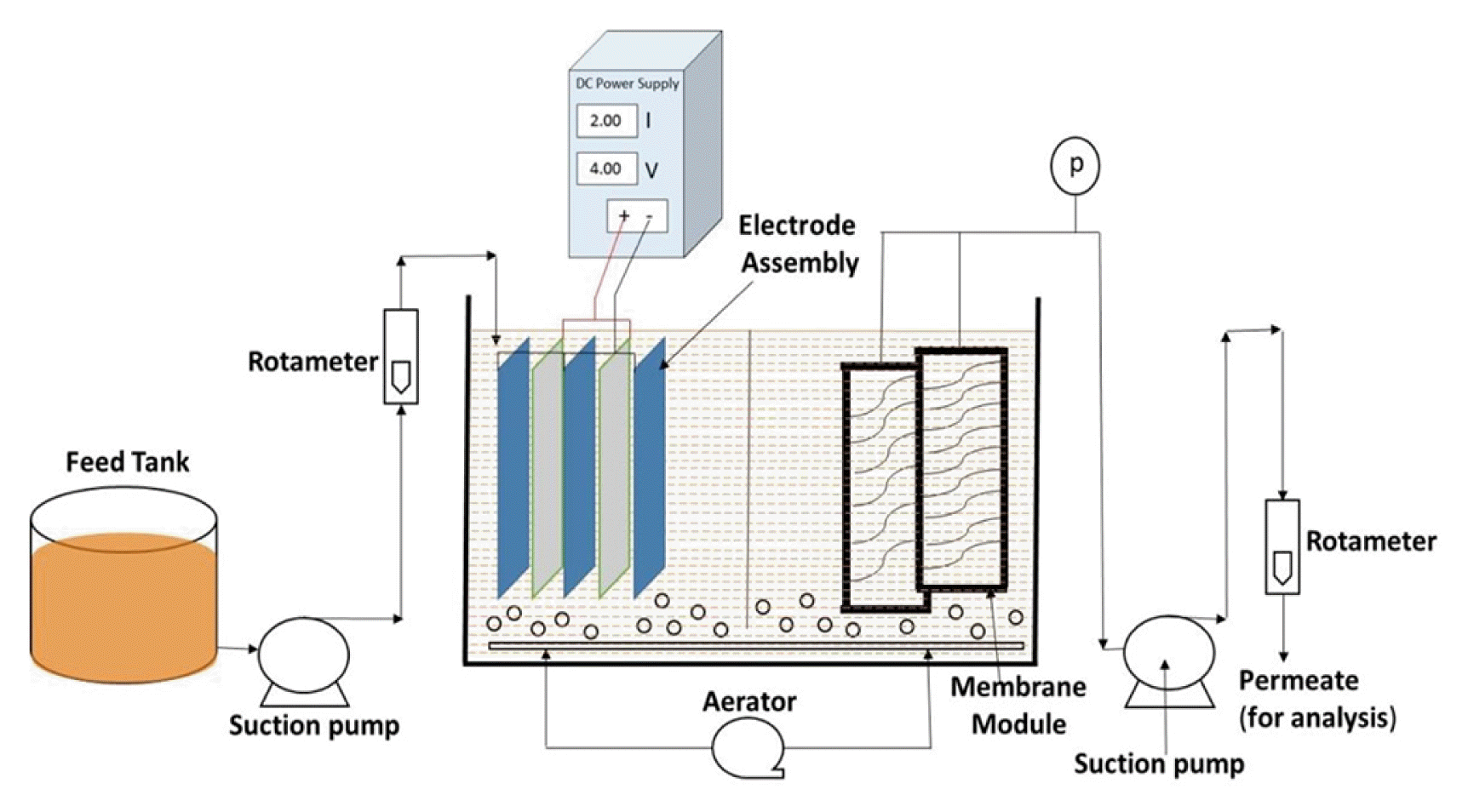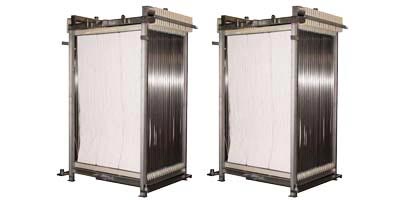The Role of Membrane Bioreactor in Achieving Higher Effluent Quality Standards
Wiki Article
The Benefits of Membrane Layer Bioreactors in Lasting Wastewater Management
Membrane bioreactors (MBRs) stand for a crucial improvement in lasting wastewater administration, effectively merging organic therapy with innovative membrane layer filtration modern technology. As the need for sustainable services escalates, checking out the multifaceted advantages of MBRs may reveal unanticipated effects for the future of wastewater treatment systems.Overview of Membrane Bioreactors
Membrane bioreactors (MBRs) stand for a considerable improvement in wastewater treatment modern technology, integrating organic deterioration with membrane layer filtering to enhance the performance of the treatment procedure. This innovative system integrates the benefits of standard triggered sludge procedures with membrane innovation, enabling boosted solid-liquid separation. MBRs use semi-permeable membrane layers to separate cured water from biomass, resulting in high-grade effluent that can be reused or safely released into the setting.The operational design of MBRs commonly involves a bioreactor where microbes break down raw material, adhered to by a membrane layer unit that filters the mixed liquor. This arrangement not only decreases the footprint of the therapy center yet likewise enables greater biomass concentrations and minimized hydraulic retention times. Additionally, MBRs are capable of dealing with a wider variety of impurities, consisting of nutrients and microorganisms, making them ideal for various applications, from local wastewater therapy to commercial effluent handling.
The combination of MBRs into wastewater administration systems is a measure of an expanding fad in the direction of lasting and reliable techniques in ecological design. Their capability to generate top quality effluent while reducing space requirements placements MBR innovation as a principal in modern wastewater treatment remedies.
Enhanced Effluent Quality

The membrane layer filtration process acts as a physical obstacle, enabling the retention of microbes and particle issue, which adds to a more clear and cleaner effluent (Membrane Bioreactor). MBRs run at higher biomass concentrations than conventional turned on sludge systems, advertising more efficient biodegradation of toxins. This leads to a decrease in biochemical oxygen need (BODY) and overall suspended solids (TSS) degrees in the last effluent
Furthermore, MBRs show superb performance in dealing with challenging wastewater make-ups, such as industrial effluents and wastewater with high nutrient loads. Therefore, the effluent created is often of greater top quality, enabling for more flexible disposal choices and reduced environmental effect. Ultimately, the improved effluent top quality achieved with MBR modern technology underscores its essential role ahead of time lasting wastewater monitoring methods.
Water Reuse Opportunities
The high-grade effluent produced by membrane bioreactors (MBRs) opens up significant possibilities for water reuse in different applications. MBRs properly get rid of contaminants, consisting of microorganisms, put on hold solids, and natural issue, causing treated water that fulfills or exceeds regulatory requirements for reuse. This high quality enables the implementation of water reusing campaigns throughout varied fields.One noticeable application is in farming, where dealt with wastewater can be used for irrigation, advertising sustainable farming techniques while conserving freshwater sources. Additionally, MBR-treated effluent can be utilized for look here industrial processes such as air conditioning, cleansing, and as a procedure water source, substantially lowering the demand for drinkable water in these procedures.
In urban settings, MBRs help with making use of redeemed water for landscape irrigation, commode flushing, and various other non-potable usages, adding to the general durability of water systems. The integration of MBR modern technology in decentralized systems help in taking care of local water needs, especially in water-scarce regions.
Reduced Environmental Effect
Exactly how can the fostering of membrane layer bioreactors (MBRs) add to a reduced ecological influence in wastewater administration? MBRs substantially enhance the therapy efficiency of wastewater while reducing environmental disruptions. By incorporating biological therapy processes with membrane filtering, MBRs successfully get rid of a large variety of toxins, including natural issue, nutrients, and pathogens. This sophisticated filtration leads to higher-quality effluent, which is essential for protecting water communities and decreasing the concern on all-natural water bodies.Additionally, MBRs run at lower hydraulic retention times contrasted to traditional systems, causing smaller sized therapy plant impacts. This compact style decreases land usage, consequently protecting natural habitats and biodiversity. The procedure likewise generates less sludge than standard methods, mitigating disposal challenges and lowering greenhouse gas emissions associated with sludge administration.
In addition, MBRs assist in the recovery of useful resources, such as water and nutrients, adding to a round economy. By allowing water reuse for irrigation or industrial processes, MBRs help ease freshwater deficiency, therefore advertising sustainable water utilize methods. Ultimately, the adoption of MBR innovation represents a substantial stride in the direction of minimizing the ecological effect of wastewater administration systems.
Financial Benefits of MBRs

Furthermore, MBRs promote the manufacturing of premium effluent, which can be recycled for numerous applications, such as farming irrigation and commercial procedures - Membrane Bioreactor. This reuse capacity read here can substantially decrease water procurement prices, giving a monetary incentive for industries dealing with rigorous water policies
The small layout of MBR systems likewise leads to reduced land demands, which is especially useful in city locations where realty is expensive. By lessening space, communities and markets can conserve on land purchase and maintenance costs.
Moreover, MBRs usually call for less regular maintenance and have a longer lifespan than standard systems, additionally contributing to set you back savings. In summary, the economic advantages of MBRs-- varying from lowered operational expenses to land savings and effluent reuse-- make them an engaging choice for lasting wastewater administration, supplying both instant and long-term economic benefits.
Final Thought
In addition, MBRs contribute to reduced environmental impacts through compact layouts and reduced sludge generation. Economic advantages further boost their stability, making MBRs an encouraging remedy for resolving the challenges of wastewater therapy and advertising lasting resource management.
Membrane layer bioreactors (MBRs) represent a pivotal development in sustainable wastewater management, effectively combining organic therapy with innovative membrane filtering modern technology.Membrane bioreactors (MBRs) stand for a significant development in wastewater therapy innovation, integrating biological deterioration best site with membrane layer purification to enhance the effectiveness of the therapy procedure.Attaining improved effluent top quality is one of the most considerable benefits of making use of membrane layer bioreactors (MBRs) in wastewater treatment.Additionally, MBRs show outstanding performance in dealing with difficult wastewater make-ups, such as industrial effluents and wastewater with high nutrient tons.Integrating membrane bioreactors (MBRs) into wastewater administration not just reduces ecological impact yet likewise provides substantial financial advantages.
Report this wiki page